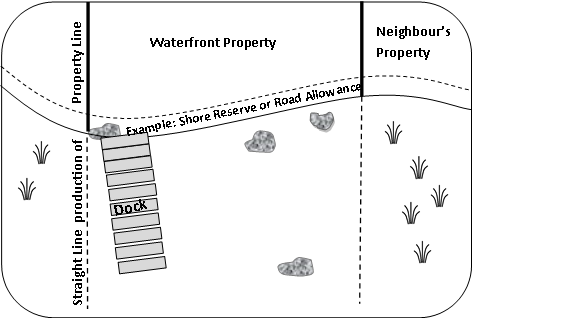Dredging shore lands previously dredged
The rules for re-dredging material from a body of water in Ontario.
Effective June 1, 2017.
The basics
In Ontario, the beds of most water bodies are Crown land.
The ministry manages these lands under the Public Lands Act.
The Public Lands Act applies to the use of provincial Crown land and shore lands. There are some exceptions, including provincial parks and conservation reserves.
The Act does not apply to the use of federal lands and waterbodies (e.g., the Trent-Severn and Rideau Canal waterways).
Dredging means to remove or displace material from the bed of the waterbody.
You may not need a work permit, if you plan to re-dredge lands that were previously dredged, provided you follow the rules listed below.
Source law
This is a summary of the provincial laws. You can find a complete set of provincial rules under the act in:
The rules
You do not need a work permit under the Public Lands Act to re-dredge the same area, if you can follow all of these rules. You:
- are the waterfront property owner or are conducting work on behalf of the property owner
- dredged the area in the past 5 years under a work permit issued on or after January 1, 2009
- carried out the initial dredge or are conducting work on behalf of the person who carried out the initial dredge
- may continue to dredge under these rules as long as the interval between dredges does not exceed 5 years
- only dredge within the boundaries of the previously dredged area
- do not use blasting when dredging
- do not dispose of dredged material in water
- properly install and maintain sediment controls around the area if sediments (e.g., sand, silt) will be disturbed, and remove them only when work is complete and sediments have settled
- dispose of the plants/material you remove on dry land to prevent it from re-entering the water
- use, operate or store any wheeled or tracked machinery/equipment on dry land, or on a barge or vessel
- do not carry out work during fish spawning season or during the time of other critical fish life stages as set out in the In-water Work Timing Window Guidelines
You also don't need a work permit if you are installing service cables, heat loops, or water intakes for private residences.
See: In-water Work Timing Window Guidelines (PDF)
When you need a work permit
You will need a work permit to dredge, if you:
- are dredging an area for the first time
- want to increase the dimensions of the area previously dredged
- don't meet all of the rules in this article
If you can't follow all the rules for re-dredging or work without a work permit, when one is needed, you may be charged and fined.
How to get a work permit
To apply for a work permit:
- download and complete the Application for Work Permit Part 1 (PDF)
- download and complete Application to do Work on Shore lands Part 3 (PDF)
- include proof of ownership (e.g. deed)
- include sketches/drawings/survey plans indicating your property lines and where the work is taking place
- submit complete application by mail or in person to a local ministry office
Additional information may be required.
Waterfront property owners
You can only conduct work on shore lands directly in front of your property or where your property is fronted by a road allowance or shoreline reserve.

This diagram is for illustration purposes only.
You may also want to discuss the project with neighbours before starting work. You could be found responsible for damage to another person’s property associated with this work.
Blasting or open water disposal
If you are dredging an area that involves blasting or open water disposal, you need a work permit.
You may also need permission from Fisheries and Oceans Canada, Transport Canada and from the Ministry of the Environment and Climate Change (MOECC).
Using machinery
Machinery should also be kept in clean condition and be free from fluid leaks.
Suspected contamination
If you suspect that the area could be contaminated, you should contact a local Ministry of the Environment and Climate Change Office.
Report a spill
To report a spill, call the Spills Action Centre at 1-800-268-6060.
Ottawa River
For properties along the Ottawa River, you must contact Infrastructure Ontario Property Services for more information:
- e-mail: Infrastructure Ontario
- telephone: 1-877-863-9672
- fax: 416-325-4646
Related requirements
Before you start any work, find out whether additional authorizations are required.
For example, you may need to check with:
- local conservation authority
- the Ontario Ministry of the Environment and Climate Change
- Fisheries and Oceans Canada
- Transport Canada
- local municipality/township
- Ministry of Natural Resources for endangered and protected species
- other provincial ministries
- Ontario One Call (to see if hydro/gas lines could be impacted)
Remember that dredging does not give you any right, title or interest in the Crown land.